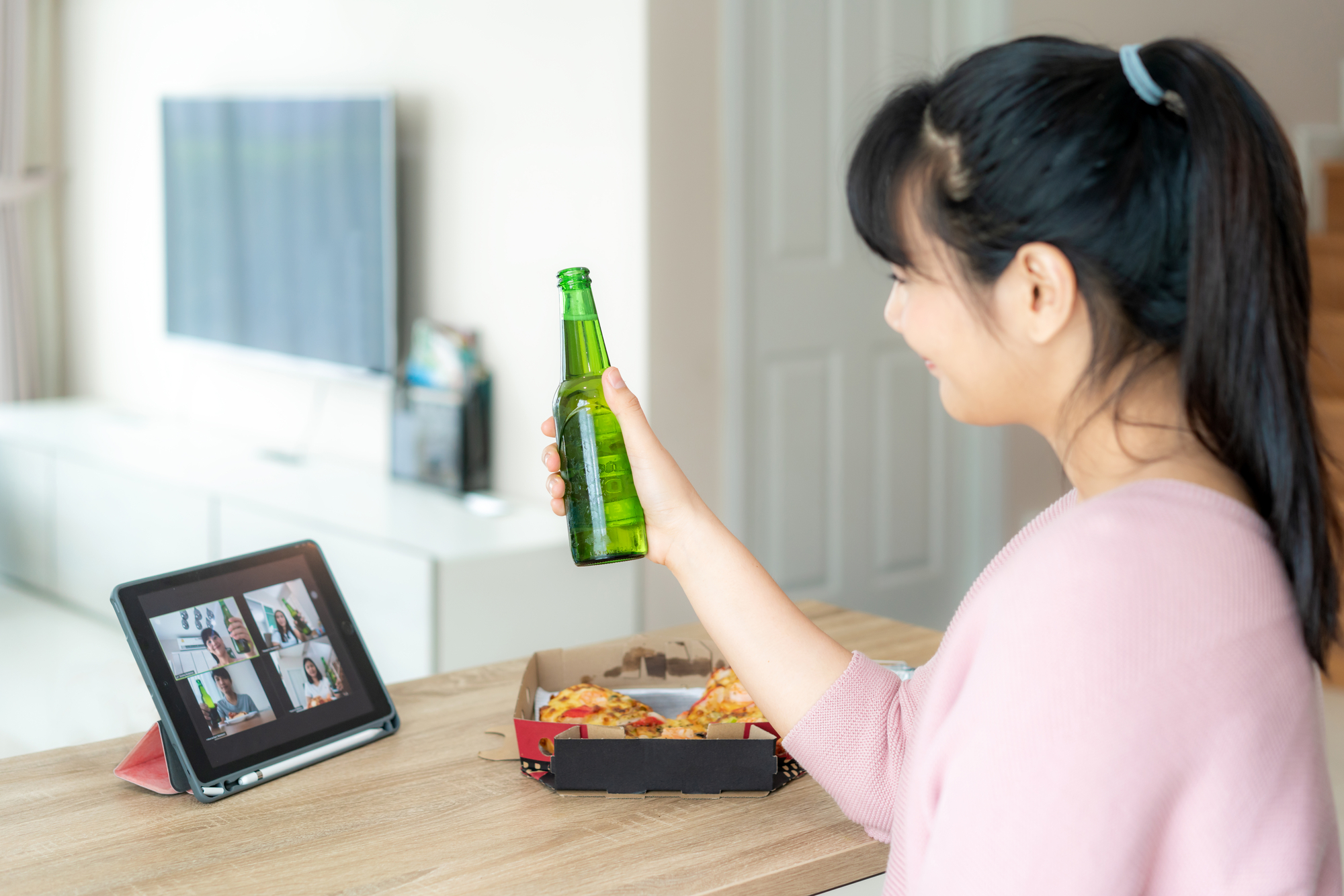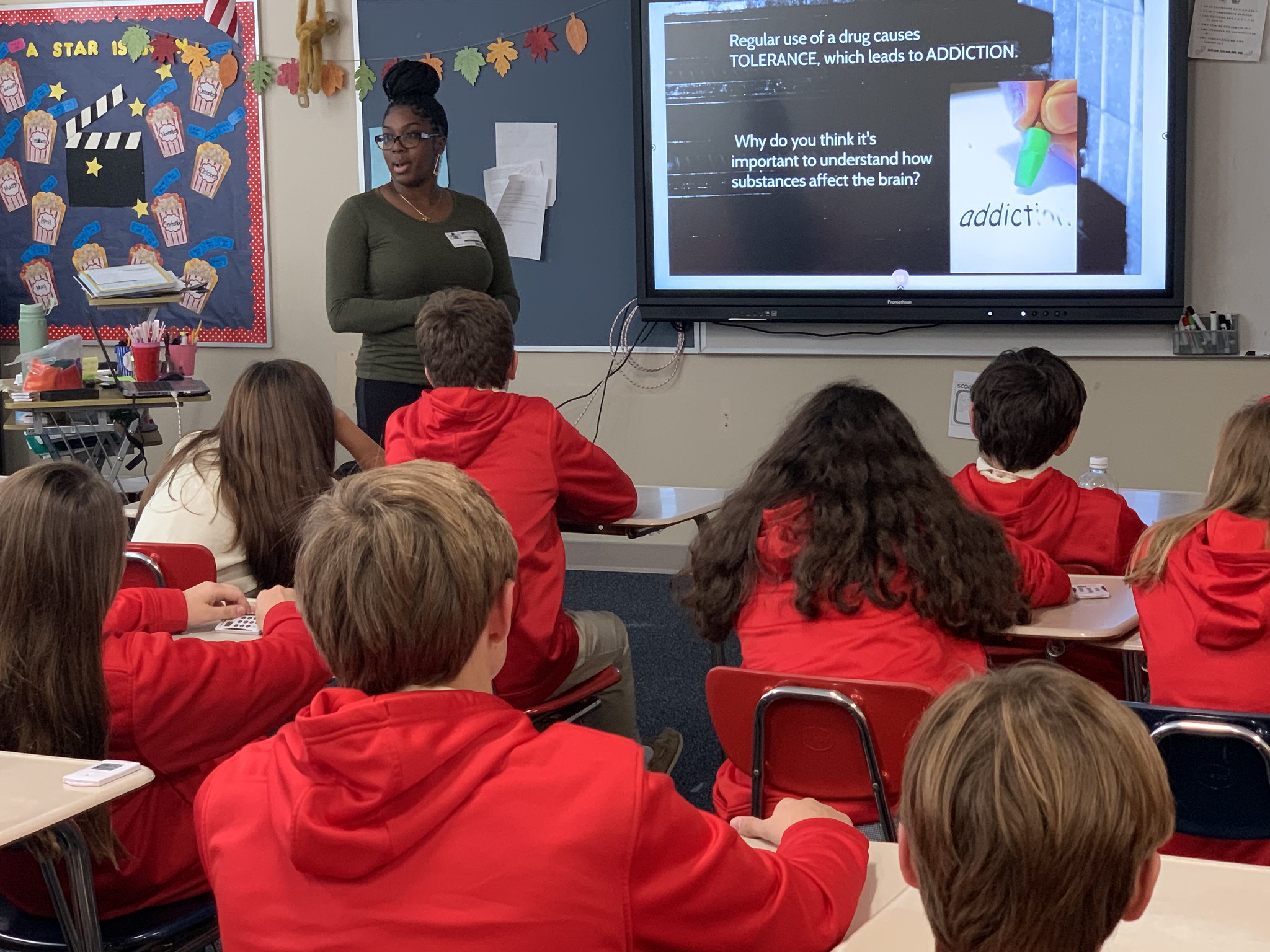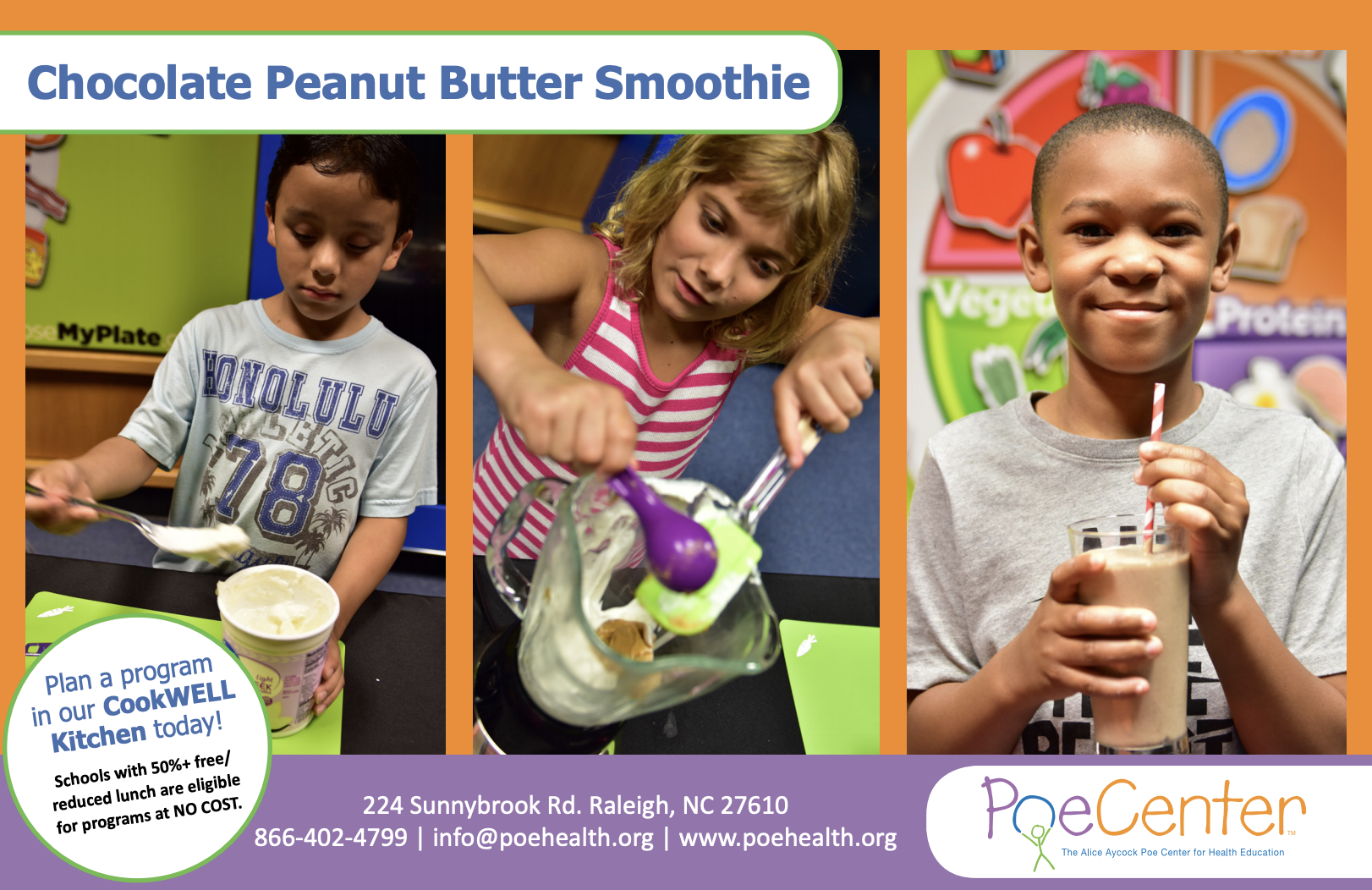
Pass the “Quarantini:” When Alcohol Consumption Meets Social Distancing
By Rebecca Wenrich Wheeler, CPS, LCMHCA
Substance Use Prevention Specialist
“Quarantini,” “virtual happy hour,” “coronacation:” terms that would have been ridiculous just two months ago are now a part of daily media conversation. Whether disappointed that we are unable to watch our favorite sports teams with friends, unable to relax after work with colleagues, or no longer attending the last quarter of college, we probably turned to technology to connect with others. Unsurprisingly, alcohol has become a central focus of virtual connections. “Quarantine and Chill” evenings and Zoom parties have replaced restaurants and bars. Memes of working parents day-drinking to survive homeschooling and virtual beer pong parties gather thousands of likes on social media. April is National Alcohol Awareness Month, which a good time to reflect on how our culture’s relationship with alcohol has changed during these unprecedented times.
According to market research by Nielsen, “alcoholic beverage sales shot up 55% in the third week of March compared to the same time last year” (Valinsky 2020). Beer sales, which had been on the decline, have increased, and hard seltzers and lemonade rose by a whopping 106% (Valinsky 2020). Stores might be limiting the amount of toilet paper, but alcohol is flying off the shelves. Three-liter boxed wine sales are up 53% and 24-packs of beer sales are up by 24% (Jernigan 2020). Social Standards, a market research technology firm, studied social media posts that mentioned alcohol consumption. Women aged 30-44, from predominantly upper-income urban areas, most referenced Virtual Happy Hours, and multicultural women aged 25-29 most mentioned alcohol consumption and Netflix (Kendall 2020). Bottom line: we’re drinking our way through the “coronapocolypse,” and that will likely have long-reaching health effects even after the pandemic ends.
The National Institute on Alcohol Abuse and Alcoholism defines “low-risk” alcohol use as 2 drinks a day for men and 1 drink a day for women. Exceeding these limits has shown to put people at greater risk for immune system suppression and increased mental health challenges. Research indicates that alcohol use negatively impacts “humans’ gastrointestinal system, altering the function of healthy gut microbes linked to immunity. Alcohol can also impair key immune cells in the lungs and damage epithelial cells that line the lungs’ surface (where COVID-19 can also attack),” (Courtney and Reeves 2020). This lung damage makes it harder to fight off respiratory illnesses like COVID-19. Not only does chronic alcohol use affect the immune system, but an episode of binge drinking can impact the immune system the following day or longer. In the days after a binge-drinking episode, a person has a greater risk of catching an illness (Courtney and Reeves 2020).
Additionally, alcohol use can trigger or worsen existing depressive symptoms. Research indicates “that having either AUD [Alcohol Use Disorder] or a depressive disorder roughly doubles a person’s chances of developing the other” (Walker 2020). Alcohol use mimics a chemical in the brain called GABA. The role of GABA is to block particular messages from being sent between nerve cells. When GABA blocks messages, the nervous system is sedated. Ironically, if someone drinks to numb their feelings of depression, the sedation effect will actually increase feelings of depression.
Moderating alcohol consumption during the stay-at-home order is not only important to maintain immune system functioning and mental health wellness, but also model healthy behavior for youth living in the home. Children watch how adults react to stressful situations and often model those responses.
Tips for adults: Moderating your alcohol consumption during COVID-19
- Manage alcohol use by being mindful of what triggers consumption, such as stress and social activities.
- Be mindful of how drinking affects your mood and reactions (Ascher 2017).
- Incorporate exercise into your routine to boost dopamine (that feel-good chemical in the brain!).
- Place alcohol out of reach and out of sight, to both minimize your consumption and make it less likely for your youth to obtain.
- Understand how adults model alcohol consumption for youth. A parent reaching for alcohol after a stressful day sends a loud signal to their child.
- Recognize the warning signs of Alcohol Use Disorder and reach out for help if needed.
For other tips on moderating alcohol consumption visit this website.
Learn more about the impact of stress during COVID-19 here.
Resources:
Walker, L. K. (2020, April 7). Alcohol and Depression: How to Treat Co-Occurring Issues.
Featured Poe Program: Choices and Consequences
Grade Level: 5th
 Students will learn the truth about the dangers of inhalants and the gateway drugs (tobacco, alcohol, and marijuana) through an interactive classroom game modeled after the popular television program, Are You Smarter Than a 5th Grader? The dangers and consequences associated with use and abuse will be discussed through the use of exhibits, BrainPop videos, and activities. Students will conclude the session with participation in an activity reinforcing refusal skills.
Students will learn the truth about the dangers of inhalants and the gateway drugs (tobacco, alcohol, and marijuana) through an interactive classroom game modeled after the popular television program, Are You Smarter Than a 5th Grader? The dangers and consequences associated with use and abuse will be discussed through the use of exhibits, BrainPop videos, and activities. Students will conclude the session with participation in an activity reinforcing refusal skills.
The Poe Center offers a variety of substance use prevention programs. We are now scheduling virtual programming! Email Poe’s program scheduler Amanda Bodenheimer for details about online programs. To register for future in-person programs, complete Poe’s program request form. We hope to “see” you soon.
Featured Activity: Make a Peanut Butter Smoothie!
Grade Level: All ages
Looking for a fun activity to do together before joining a video chat party? Make a smoothie! This smoothie is a tried and true Poe Center favorite. Plus, it’s a great beverage to sip while you video chat your loved ones.

Ingredients:
1 cup low fat vanilla Greek yogurt
2 tbsp peanut butter
1 tbsp unsweetened cocoa powder
1 banana
½ cup low-fat milk or milk alternative
½ cup ice
Optional- 1 tsp cinnamon
Cooking instructions: Measure all ingredients and place into a blender. Pulse until smooth. If too thick, add more milk. If too thin, add another banana. Enjoy cold!
